
The China-US Liminal Warfare Timeline you read below is, seemingly, a work of fiction. In it, guest contributor David Reeder — you may remember that name from the forward to the SPOTREPS anthology — lays out some of the Sino-American actions and tensions in the world of Maelstrom Rising. Much of this actually appeared in the SPOTREPS anthology, but it has been expanded and clarified since then (and may in fact be periodically updated). There will be a few people who scoff at some or all of these events, much as they do the idea of a US-China war.
I challenge those people to pick out the handful that isn’t actually true or extrapolated from real events.
The exact date of some events is left deliberately ambiguous, but Maelstrom readers should assume they all predate the Triarii’s infiltration of Slovakia in Escalation by several (even many) months, but not by several years. Though from the character-level eye much of this is in conjecture, we can assume that much of it is correct, if not canonical. After all, ACTApedia, a direct reference to the Augustine-era Acta Diurna, is an OSINT platform run by close allies of the Triarii (with the tacit approval of those in the DoD, intelligence, and political community who aren’t useless careerists or handwringers).
Publicare et Propagare.
Pete Nealen
Liminal Warfare: “China War” [As They Wage It]
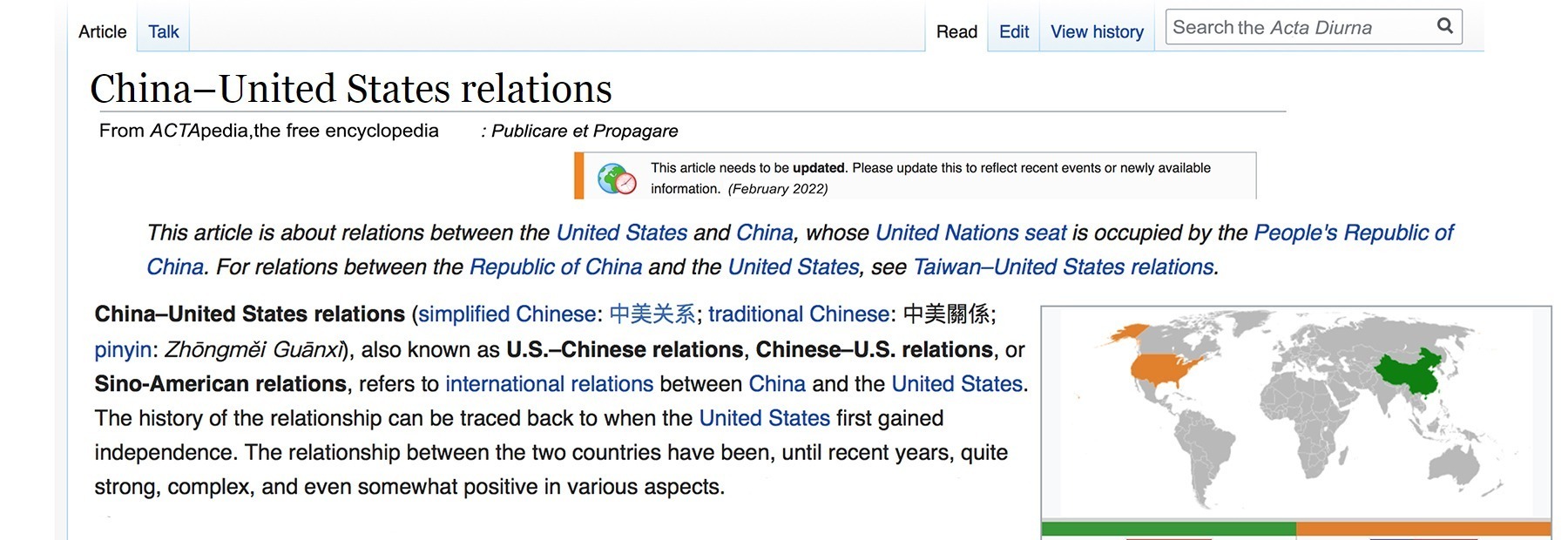
The United States thinks of war as Tomahawk missile and Reaper strikes, special operations raids and the use of air power to destroy hostile targets. China considers such “kinetic” measures to be just one part of warfare writ large.
This is why so very few people in America recognize that while the US may not actually be “at war” with China, China has been very much at war with the United States since at least the late 90s. It is long term, liminal warfare to be sure, cloaked in economic deals and massive humanitarian expenditures all over the globe, but warfare it is: liminal warfare.

Beijing strategizes long term, albeit not always effectively. Washington D.C. does so, at best, in eight year, two-election cycles.
Despite its inarguable size and power, China has long known that despite the decreasing disparity in the overall size and strength of the two nations’ militaries, and its ever-increasing ability to project that strength, it would not fare well in a “shooting war” with the United States – certainly not an extended one. Indeed, the fact that Beijing holds over 30% of American national debt (over 1.5 trillion U.S. dollars) makes out-and-out open warfare extremely unlikely.
So China wages war on multiple, frequently ambiguous, and plausibly (if just barely) deniable, levels.
GEOPOLITICAL ACTIVITY AND INFLUENCE OPERATIONS
NATO and the EDC
The Arabian Sea
The Persian Gulf
The California Coast
Baja California
Oceania
The China Sea
East Africa
Horn of Africa
Elsewhere in Africa
“It is becoming obsolete to automatically consider military action the dominant means and the other means supporting means in war . . . As the arena of war has expanded, encompassing the political, economic, diplomatic, cultural, and psychological spheres, in addition to the land, sea, air, space, and electronics spheres, the interactions among all factors have made it difficult for the military sphere to serve as the automatic dominant sphere in every war. War will be conducted in non-war spheres…” Qiao and Wang, Unrestricted Warfare
This particular manner of waging war, which has been used by the Chinese with varying degrees of success since men were wearing metal armor and killing each other with sharp objects, has been very effectively honed over the last three decades. The 11th century “Six Secret Teachings” counsels several ways to undermine a target nation through the corruption of its officials, leaders, and heroes. They call this the Civil Offensive.
As mentioned in Unrestricted Warfare, the very definition of “war”, at least in Beijing’s view, has changed. It is no longer “…using armed force to compel the enemy to submit to one’s will”, but rather “…using all means, including armed force or non-armed force, military and non-military, and lethal and non-lethal means to compel the enemy to accept one’s interest”.
Thus the Chinese use investment, financial disruption, currency manipulation, cyber warfare, ecological warfare (including wildfires and biological “interventions”), foreign assistance, humanitarian aid, and canny exploitation of crime (such as smuggling and narcotics trafficking) and the savvy use of black markets to augment traditional land-sea-air-space-cyber elements. Stock market crashes, infrastructure computer hacks, innuendo, and social media-fueled scandal may not be as obvious as the clatter of tank treads and the scream of jet engines, but they’re no less effective when disrupting the solvency and stability of a nation.
These methods are not a substitute for armed conflict, whether traditional-conventional or asymmetric-SOF focused. They are simply, to the Chinese strategist, a logical (and pragmatic) extension of the norms of waging war.
The goal, as propounded by Qiao and Wang, is to use “…all means whatsoever—means that involve the force of arms and means that do not involve the force of arms, means that involve military power and means that do not involve military power, means that entail casualties and means that do not entail casualties—to force the enemy to serve one’s own interests.”
Note that to serve one’s own interests is not necessarily the same as to be victorious on a military battlefield.
“The fundamental difference between the Chinese and Western approach to strategy is that the Western approach is aimed at the capability of the other side; the Chinese is aimed at the psychology of the other side. So they pay a lot of attention to intangibles of hospitality, forms of dealing with the interlocutor.” Henry Truman
This is not to say China has not been developing and improving a traditional military – it has, particularly in a maritime capacity. China’s borders are vast. It has more than 9,000 miles of coastline (and 14,000 miles of land border) along with one of the largest surface areas on the planet. To defend those borders, and to sustain the trade necessary to keep the largest population of any country in the world happy, is no easy task.
Security along its landward frontiers is less difficult than it shoreline. Formidable geographic barriers (consider the Central Asian desert and the virtually – militarily – impenetrable Himalayas) see to that. But its shoreline is less naturally well-endowed for defense, and its economy relies heavily upon maritime commerce.
In addition to building a blue water fleet to expand its ability to defend itself and, just as importantly, to project power into both the Pacific and Indian Oceans, Beijing has for many years been building areas of (seemingly) militarily innocuous strategic influence all over the globe.
Sun Tzu said,
“Attaining one hundred victories in one hundred battles is not the pinnacle of excellence. Subjugating the enemy’s army without fighting is the true pinnacle of excellence.”
Chairman Mao later echoed this advice almost verbatim.
The famous Chinese strategist isn’t the first to recommend such mechanisms for prevailing. The “Six Secret Teachings,” which are believed to date from the 11th century B.C., include several points on undermining a target nation (in this case believed to be the Shang dynasty) through the corruption of its officials and leaders. It is referred to in the “Six Secret Teachings” as the “Civil Offensive.” Some scholars refer to it as “grey zone competition”, though that is not [at least not entirely]Citation Needed correct. Grey Zone competition (and Hybrid Warfare for that matter) is often an integral part of Liminal Warfare, but they are not one and the same.
Warfare is the Way (Tao) of deception.
China is verygood at it.
“The seemingly effortless defeat of Saddam Hussein’s large, Soviet-style army by a numerically smaller but technologically much more advanced Western force had spooked Chinese planners, showing them the primacy of precision over mass. The unprecedentedly low American casualties and the almost unbelievable speed of the Iraqi collapse prompted debate within the Military Commission in Beijing and intense discussion in the war colleges.
Chinese analysts were well aware that Iraqi forces had relied on a strategy of mass—using quantity to offset technological inferiority, much as China had done in Korea, India, and Vietnam—and had failed utterly. At the same time, Chinese technical intelligence officers, who had examined Iraqi tanks and aircraft captured by Iran during the Iran-Iraq War, were well aware that Saddam’s military technology outclassed their own.
The two inescapable conclusions were, first, that China was at risk of attack by external aggressors now that the end of the Cold War had rendered it the sole remaining major Communist power and, second, that the PLA would be immensely outgunned in a future conflict.
Chinese military thinkers began focusing on a dual-track strategy of peaceful economic and political engagement with the West (seeking to postpone or entirely avoid any possible conflict) while simultaneously accelerating their development of new military…”
David Kilcullen, The Dragons and the Snakes, Oxford University Press
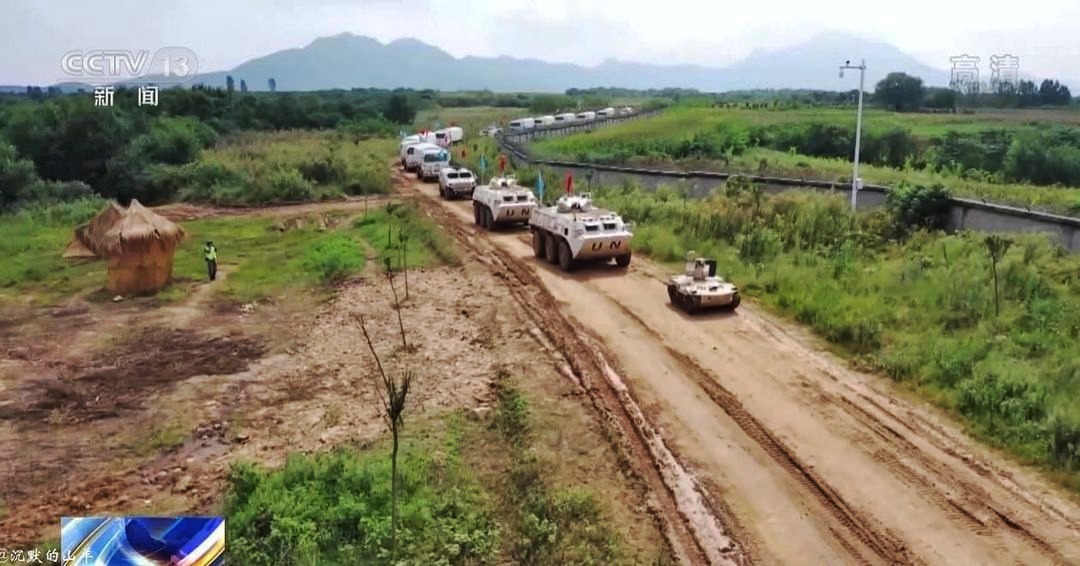
SUSPECTED LIMINAL WARFARE ACTIVITY
-
European Defense Council
NATO, the EDC (Council), and the EDC (Corps)
“As the leader of the EU, Germany has said that Europe should take charge of its own security. It is also a brand new world security situation now, as both China and Europe would want to hedge their risks in dealing with the US.” Wany Yiwei, European Studies, Renmin University of China, in an article on Business Insider
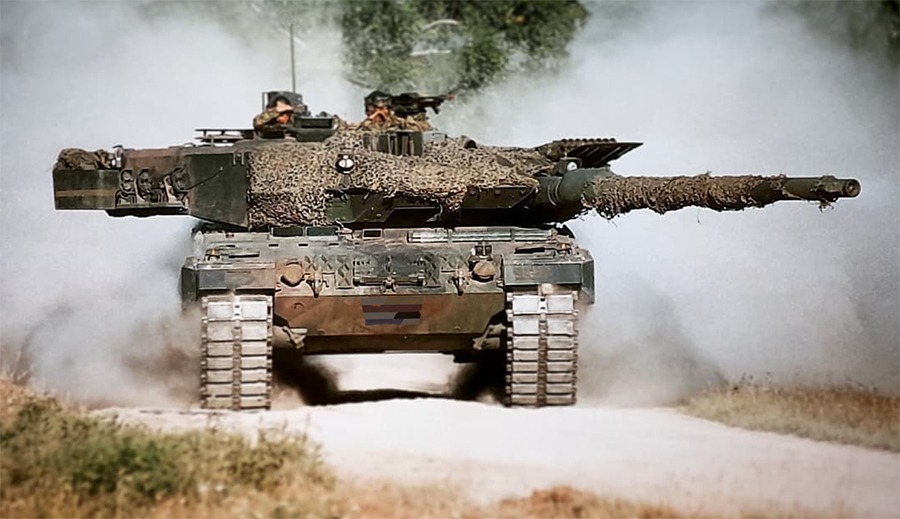
The relationship between the European Defense Council and China is a far better one than that of NATO and China. This is due to a number of things, including a desire on the part of major “Old Europe” players (particularly France and Germany) to dominate what is being called the “New Europe”, which includes former Warsaw Pact countries. Nowhere is the contrast between the EDC and NATO more obvious than in the individual relationships of certain member states. As an example are the rapidly increasing tensions between Greece (which China continues to woo with economic aid) and Turkey (which recently severed diplomatic relations with Beijing). Another obvious example is that of the United States and China (which are frenemies at best), but another, less obvious one is the growing antipathy between Norway and China (which have been at odds over exploitation of the Arctic Circle).
Despite issues with some of the less influential countries, China is now firmly embedded in many EDC (Council, not Corps) territories, particularly the Mecklenburg-Vorpommern region. Chinese business interests purchased the Gnoien-Warbelow airfield near Trollenhagen outright, Chinese scholars comprise a substantial minority of the faculty at Hochschule Neubrandenburg, and local Chinese ex-pats are even the source of substantial support for the Neubrandenburg Philharmonic Orchestra.
These developments could mean a lot or nothing. Given Neubrandenburg’s proximity to the presumed headquarters of the nascent EDC (Corps, not Council) First Division, however, Chinese interest in the area is worrisome (at least to observers in the UK, US, and Canada).
Of additional concern, at least to those with an antipathy toward increased Sino-EDC cooperation, are the inclusion of small numbers of PLA troops in heretofore exclusively European exercises like Celtic Uprise and Dynamic Front, the expansion of joint exercises like those of EU NAVFOR and Combined Aid, and the sudden invitation to certain PLA, PLAAF, and PLAN officers to the French and German military institutions like the Centre de Préparation des Force and even the Führungsakademie der Bundeswehr on “exchange programs”.
- European/NATO Ports and facilities
In 2016 COSCO Shipping (China Ocean Shipping Company) purchased a 51% controlling interest in the Port of Piraeus in Greece. A few years and $750 million USD worth of investments later, that amount jumped to 70%.
The commercial advantages are undeniable – the port is the largest commercial harbor in Europe, in a location central to the shipping of three continents. Just as importantly, however (perhaps more so), it is home to Greece’s largest naval base, a hub for NATO Mediterranean maritime operations, and the home port to at least one of US 6th Fleet’s permanently attached squadrons.
COSCO soon also owned majority ownership of the largest container terminal at France’s third busiest port, Dunkirk, and Belgium’s Zeebrugge harbor. It likewise gained significant influence at Noatum Port Holdings in Spain, the Port of Rotterdam in Netherlands, and many other economically and militarily strategic ports.
Dunkirk, for instance, is not only a massively important European entrepôt, it’s just a stone’s throw from the British coast – not to mention the new semi-permanent home of the latest iteration of China’s Task Group 150. A three-ship flotilla is hardly going to gain naval supremacy in the Strait of Dover, as France’s President was heard to tell the British PM in a decidedly scornful tone, but the Royal Navy is well aware that even a handful of YJ-91 missiles could effectively shut down the English Channel – to say nothing of second-generation ASBMs that could easily be concealed in bulk freighter’s or under the cover of port facilities.
Control of such critical infrastructure is achieved in a number of ways, from outright mercantile purchase to technological assistance and even trade. Rotterdam was reckoned to be the most automated port in the world even before the UK and Italy withdrew from the EU, all thanks to Chinese cyber-tech…technology which Chinese companies still service and upgrade.
Beijing has taken additional steps under the guise of “private” tourism-economic ventures.
A significant example of this: Roslea Hall, a four-star hotel on the shore of Gare Loch, was purchased by investor Tom Xu for an unknown amount of money. Roslea Hall is certainly a good purchase for someone wishing to enter the UK’s hospitality market, but it’s also a superb acquisition for anyone wanting to keep an eye on Faslane, also known as His Majesty’s Naval Base, Clyde.
HMNB Clyde, located just about four miles from Roslea Hall, is one of three Royal Navy bases in the UK. In addition to being the Royal Navy’s headquarters in Scotland, it is also home to about a dozen RN submarines – including all five of her nuclear subs. It is also home to No. 3 Commando Brigade of the Royal Marines.
Any submarine sortie from Faslane must pass between the town of Rosneath, on the west, and Rhu, on the east. The transit is a narrow channel barely the length of a football field.
Roslea Hall looks right over it.
Signals intercept and monitoring ship traffic to and from the Atlantic are (rightfully) the primary concern of His Majesty’s intelligence services at Faslane. However, it is by no means an exaggeration to note that a proficient hostile actor could easily hit a transiting vessel with something as small as a handgun, to say nothing of an RPG-30, Nashshab (بي جي نشاب), or even higher tech man portable missile.
- The Arabian Sea
Beginning a 40-year lease with the government of Pakistan, Hudong-Zhonghua Shipbuilding recently took effective control of Gwadar Sea Port. The harbor at Gwadar is an expansive deep water port close by the PNS (Pakistan Naval Service) Jinnah Naval Base. The port facility is at the heart of a 2300-acre “special economic zone” with a new international airport under construction.
The advantages of this maneuver are many, including:
▪ Positioning friendly security elements stationed there just a stone’s throw from Iran. This puts them in an excellent position to access and influence the Gulf of Oman and from there, the Straits of Hormuz. Should (or when) the expected Saudi-Iranian cold war turn hot, Chinese forces would be in a position to assist Iran, interfere with the Saudis, US, and likely coalition partners, or simply to “intercede” as a peace-keeping entity. Such a choice would depend upon how Beijing read the situation, but the precedent for such peaceful third party interference was long ago set by a number of countries – in particular the US.
▪ Anchoring the “far end” of the China-Pakistan Economic Corridor, thus linking China to the Arabian Sea. This allows China to utilize Pakistan for energy transport by land (bring Iranian and Caspian Sea oil overland), thereby bypassing the choke point and constraints of Strait of Malacca (though steps have been taken to control that area as well).
▪ Providing a foundation from which to counter anti-Iranian, arguably pro-American activity by Saudi Arabia in a mostly-Sunni region. This region historically extends from what is now Pakistan into the Sistan-Baluchistan province of (predominantly Shia) Iran. Small parts of Afghanistan’s Helmand, Kandahar, and Nimruz provinces are also considered to be part of Balochistan.
▪ Further weakening US-Pakistan relations. China is already Pakistan’s largest military supplier and has a vested interested in counterbalancing or marginalizing American influence in Karachi.
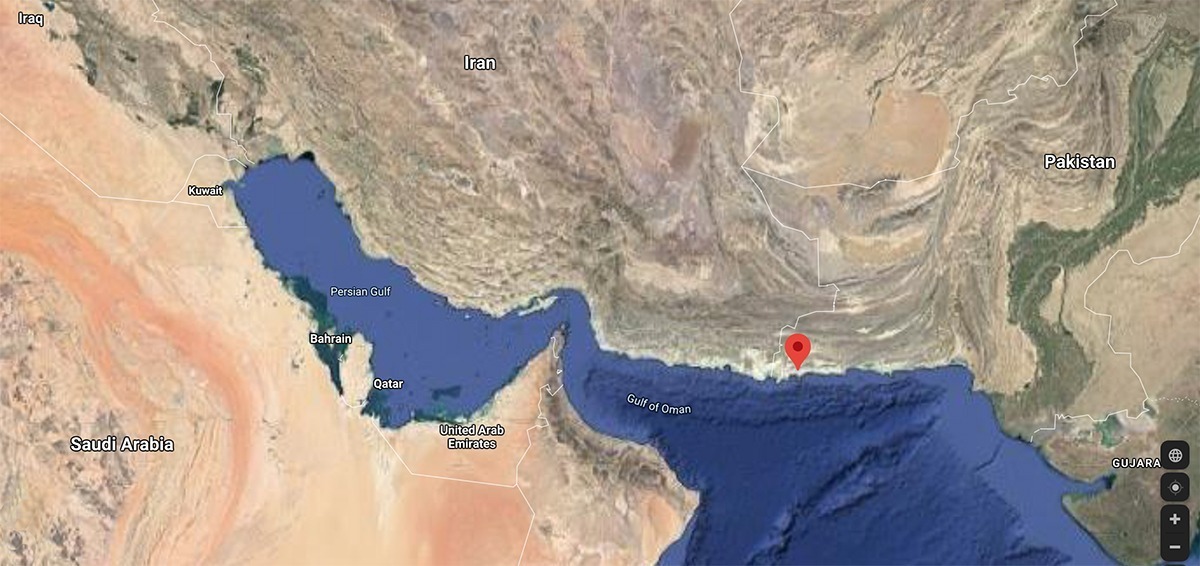
▪ Providing de facto “insurance” by virtue of economic influence with the Baluchi people. Geographically, Balochistan comprises a little less than half of Pakistan, home to just 4.5% of it population, but its economic significance is immense —not least because the preponderance of Pakistan’s natural gas and mineral wealth is there. It is also a restive and frequently volatile region, with a simmering autonomy movement. The presence of strong Chinese- and Chinese-contracted security forces combined with that economic influence give Beijing substantial weight in local affairs and would continue to do so even in the unlikely event that Baluchistan became independent (though Saudi Arabia has been supporting the restive autonomy movement there for at least a decade).
▪ Establishing cover: the presence of such security elements at Gwadar Sea Port and the airport provides excellent cover for Chinese liminal warfare operations across the region, but particularly in the littorals of the Gulf of Oman, Arabian Sea, and Gulf of Aden.
Note: Among security elements maintained by HZS at and near the port facility are several “commercial” fast attack craft virtually identical to the PNS Azmats, crewed by a mix of veteran sailors (including a large number of Bangladeshi navy SWADS operators), the Sri Lankan Rapid Action Boat Squadron, and (predictably) “retired” officers and NCOs of the PAPCGC. It is reliably assumed, though yet to be proven, that several senior “security officials” helping protect Beijing’s interests are in fact serving PLA and PLAN general officers who have been deniably reassigned or “retired” to ostensibly civilian employ.
As of this writing, ground elements and light to medium armor capability have reached at least 25,000 personnel. Most are provided by a number of PSCs, including Hua Xin Zhong An Security Services and, barely a decade after the independence of South Sudan, the surprisingly competent Juba Garang. The latter company is a South Sudanese PSC originally recruited by the state-owned China National Petroleum Corporation (CNPC).
These former militiamen, trained by (and having close ties to) successive CHNBATT elements (see Chinese activity in China, below) number about the same as a light battalion. Ironically, much of this unit’s equipment was purchased with funds from the US State Department’s Africa Peacekeeping Program (AFRICAP) and issued from the DynCorp-built South Sudanese military GHQ at Bilpam. Many of the African security personnel are veterans of the Nuer White Army and/or the SSPDF 1ST Division.
The Persian Gulf
Several years ago Beijing began eight modified diesel-electric submarines and coastal patrol ships to Pakistan; originally four of these were to be built in Pakistan and four in China, though eventually this was increased to six and four. The first two of what was eventually to be 10 Type 39B Yuan class vessels delivered had active duty PLAN (中国人民解放军海军) advisors aboard “for the foreseeable future” for training. Intelligence sources report that many of those advisors have never left, or if they did return to China did so only after being relieved in place.
Additional rumors indicate that most of the crew members on the half dozen most effective vessels are contracted Chinese “civilians” with former service in the PLANSF, outnumbering those who are actual serving Pakistan Navy personnel. There has been some (warranted) speculation that at least two of these patrol ships are effectively a maritime PMC, with a completely foreign (to Pakistan) crew complement, paid for by Beijing but flagged by Islamabad.
The first Chinese-built submarine was delivered under escort by the Kilo class sub Yuan Zheng 68 Hao, the same one thought to have stalked the USS Ronald Reagan.
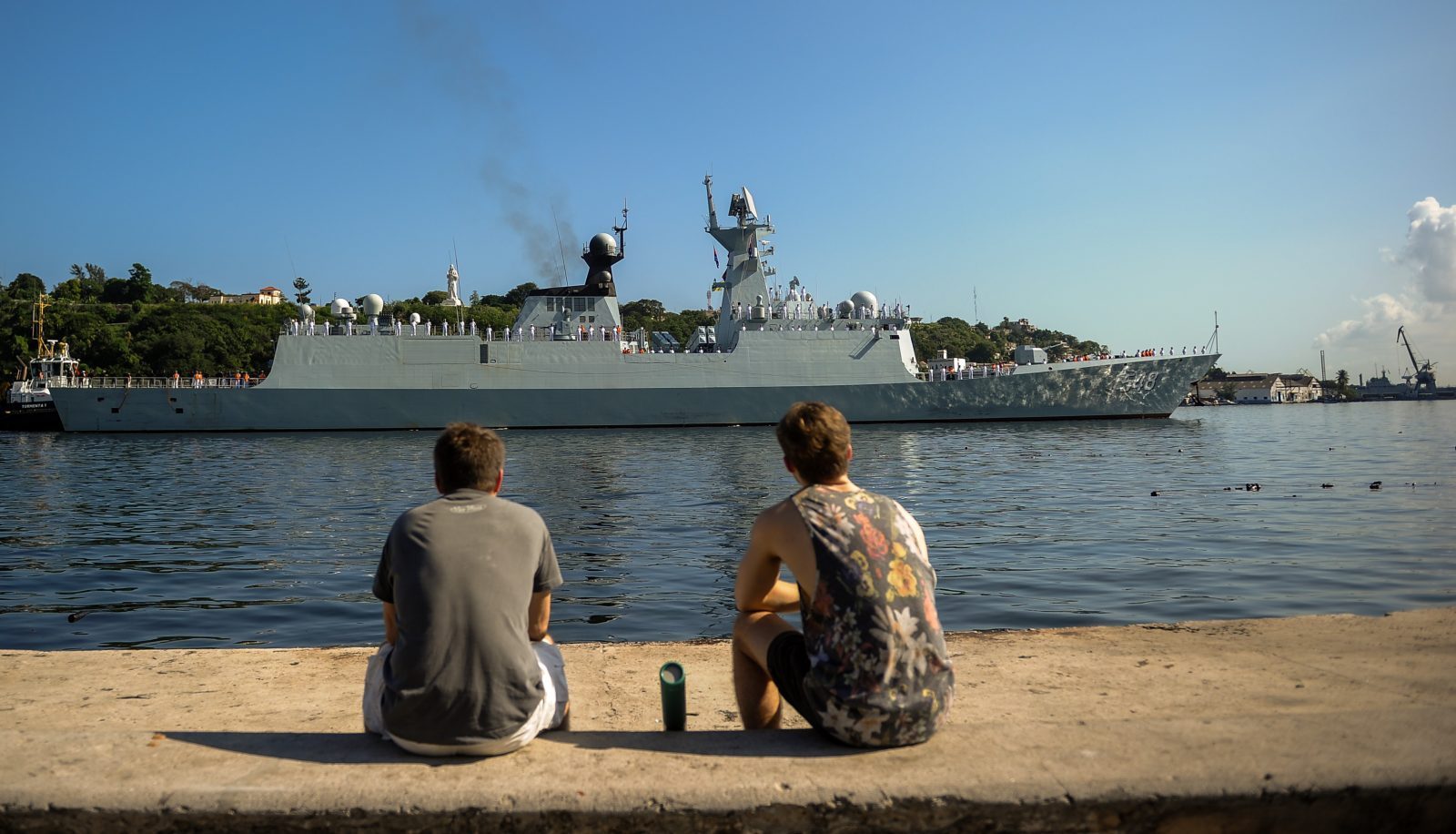
These 10 boats (12, really, see below) substantially improved Pakistan’s A2/AD (Anti-Access/Area Denial) capabilities, a fact which is of great concern to the navy of India. So too is Beijing’s ever cozier relationship with Islamabad – particularly since at least four of the new submarines were in service before the long delayed INS Vikrant ever started her sea trials (and long before her sister ship’s keel was laid). The PNS submarines and their attendant facilities represent a significant force multiplier for Chinese military interests in the Arabian Sea, freeing similar PLAN vessels up for other duties (or, at need, potentially operating in conjunction with them).
Interestingly, it is later discovered that two older vessels, PNS Abu Dujana and PNS Abu ‘Amr had been previously purchased outright by the Pakistan National Shipping Corporation and based in secrecy in parts of the Gwadar Sea Port. Both of these vessels are Song class subs thought until discovery to have still in use by PLAN.
Masked by construction equipment, bulk freighters, and the bustle of other shipping, these two additional submarines were not identified until joint training maneuvers and crew transfers were necessitated by sea trials for the more modern boats.
The PNKC deal is found to have been brokered by the (state-owned) Pakistan Maritime Security Agency and paid for with a loan by the Sonali Bank of Bangladesh (also state-owned). According to news releases, the submarines, allegedly disarmed at the time of purchase, are intended for use as “unarmed ISR platforms” by PNS merchant marine concerns in counter-piracy operations.
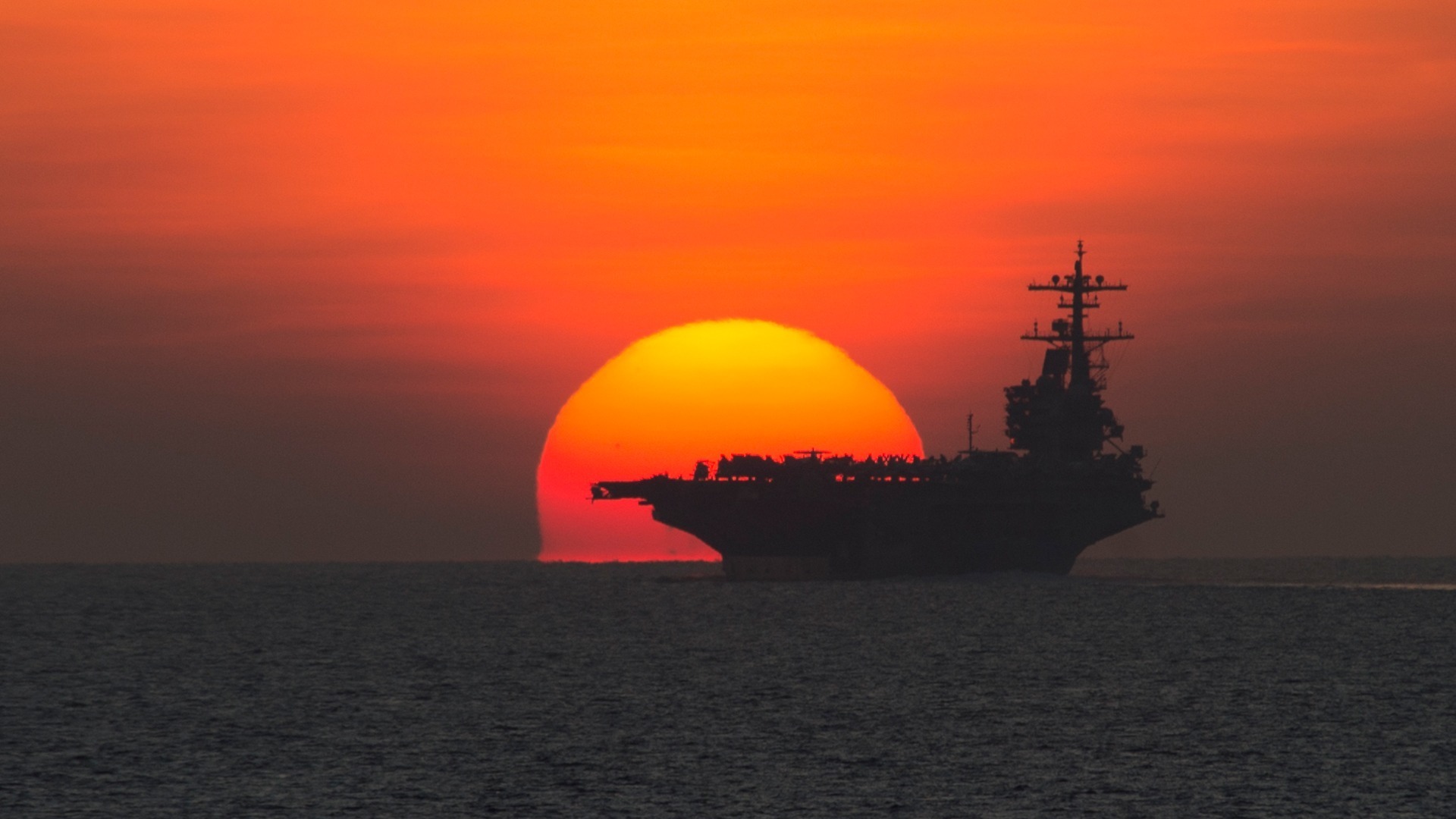
The California Coast
The world-renowned Hotel Del Coronado, once declared one of the top 10 resorts in the world, was quietly purchased by the Anbang Group from the Blackstone Group for a sum estimated to be well in excess of $1 Billion USD. The sale was made and considered complete until formal finalization was blocked by the US government.
Anbang Group was a private Beijing-based holding company at the time of purchase, though later it reverted to Beijing’s control.
The significance of Hotel Del Coronado is one of geography and proximity. The resort is close by Naval Air Station North Island, Naval Amphibious Base Coronado, Silver Strand Training Complex South, and San Diego Naval Base. It directly overlooks Point Loma.
The significance of this is manifold.
▪ Point Loma is home to the USN’s Fleet Intelligence Command Pacific, its Space and Naval Warfare Systems Command, and Submarine Squadron 11.
▪ San Diego Naval Base is home to CSG-9 (Carrier Strike Group 9), flagged by the USS Theodore Roosevelt and one of the most powerful formations in the United States navy.
▪ NAS North Island is home port to another of America’s 10 nuclear carriers, the USS Carl Vinson and CSG-1.
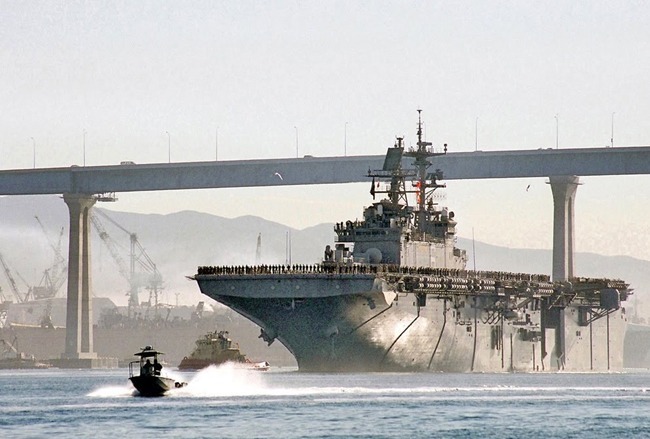
▪ Naval Amphibious Base Coronado is not only where West Coast SEALs are trained and headquartered, it is the location of United States Naval Special Warfare Command (NAVSPECWARCOM).
▪ Silver Strand Training Complex South (SSTC-S) is one of the most comprehensive training facilities for Special Operations Forces in the country, used not just by SEALs but by all elements of USSOCOM. It is used as both a ship systems testing area, MOUT/urban warfare training and littorial operations, and all Naval Special Warfare (NSW) UAV and USV development.
It is a fairly simple matter to see what an excellent surveillance platform the Hotel Del Coronado is (in addition to being a very profitable business concern).
Anbang Group was run in part by Mr. Chen Xiaolu before his death. Chen was a former Red Guard and retired PLA Colonel and his father none other than Marshall Chen Yi. Chen Yi was a Mao Zedong contemporary, a PLA Commander, and later the Chinese Foreign Minister.
The attempted sale of the resort was blocked by the Committee on Foreign Investment in the United States, whose job it is to review acquisitions of American businesses by foreign investors and concerns for possible threats to national security. Shortly after the finalization of the deal was prevented, Anbang Group was “nationalized” by Beijing.
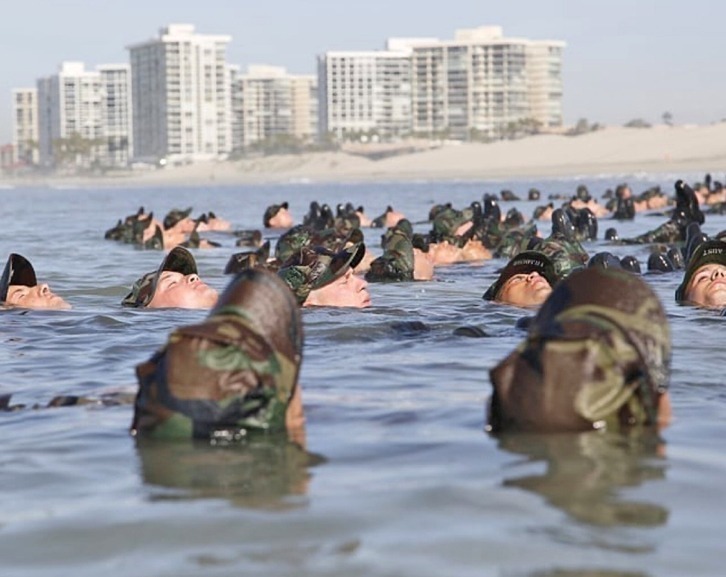
within shouting distance of the Hotel Del Coronado.
By the time the government intervened, however, a substantial portion of the staff had been hired and trained at the behest of what were to be the new owners (i.e., the Chinese, via Anbang Group). Renovations in some areas of the resort, including those set traditionally set aside by the “Hotel Del” for the use of high-ranking local military personnel and their spouses, were completed by Chinese-owned construction companies.
This lead at least some to question whether surveillance tech might not have been installed during the work, but such speculation was denounced as conspiracy theory and Sinophobia.
Blackstone Group retained ownership over the hotel. However, over the next decade and a half at least 15% of the (multiple) billion-dollar company’s voting shares were gained by Chinese nationals. By the time of the Fourth Balkan War Chinese investors all but managed the place.
- Baja California
▪ Competition with US Pacific Ports & Influence in Mexico
The Barrio Chino based Chinese Consolidated Benevolent Association (CCBA) took control of numerous dominant structures and significant local businesses in and around Lázaro Cárdenas, Michoacán, including controlling interest in several parts of the harbor itself, without anyone really noticing. Indirectly financed by Beijing and several prominent Chinese-Mexican businessmen (including Zhenli Ye Gon), the move included steps to ensure substantial influence of over local infrastructure, particularly the railways.
The Port of Lázaro Cárdenas is a major deep-water seaport well positioned to move massive amounts of materiel (mostly via the Transportación Ferroviaria Mexicana or TFM) into the United States toward Houston, Oklahoma City, Kansas City, and Chicago.
Because of ongoing congestion at such major American ports as Los Angeles and Long Beach, the city quickly became home to one of the largest and busiest container ports in the world. It was soon an economic challenge to ports all along the California coast and directly impacted San Diego’s economy sufficiently that state and local officials began seeking legislative reform to fight back.
In fact, its proximity and capacity may well be why Littoral Combat Ship Squadron One was left in San Diego instead of deploying to NSA-Souda Bay (Crete) as was originally intended, though that delay was rescinded upon accusations of anti-Mexican racisim and even formal charges of Sinophobia from various Chinese-American political groups.
▪ Regional Muscle
After the Banco Azteca Massacre and so-called “Zaculeu Intervention” (when Mexican military forces crossed the Guatemalan border and established the euphemistically named ”Huehuetanango Security Zone”), there were numerous terrorist attacks on the Mexican rail system — though curiously hardly anywhere else. These attacks, allegedly backed by Guatemalan security services and members of the resurgent Zapatista Insurgency, resulted in several security companies being contracted to provide security for the TFM.
The largest of these formidable organizations were the La Chinesca based SRD (Servicios de Respuesta del Dragón, or “Dragon Response Services), a PSC comprised almost entirely of Chinese-Mexicans, and Operaciones Estoicas (OE, in English Stoic Operations).
OE is of course the often controversial PMC thought by the Procuraduria General de la República (PRG, the Mexican Attorney General’s Office) Centro Nacional de Planeación, Análisis, e Información para el Combate a la Delincuencia to be connected at several levels with the Abarco-Cruz Cartel narco-terrorist group.

SRD was founded by Oscar Arturo Murrieta Navarro, a former Fuerza Especial de Reacción
operator and veteran of the operation to capture Javier Torres Félix. Forced to retire after unproven allegations of ties via a cousin to the sicarios for the Caro Quintero group), Navarro spent several years as Chief of Security for Zhenli Ye Gon’s company, Unimed Pharm Chem México. Leaving Unimed Pharm and backed by his former boss’s substantial resources, he used his considerable network of friends within the Mexican Special Forces community to build what was to become perhaps the most successful PSC/PMC in Latin America.
For its part, OE, headquartered in La Mesa, was actually under active investigation by several Mexican intelligence agencies. Given the demands of dealing with the insurgency to the south, however, little was done with it. That investigation was later completely dropped after several dozen police officers were murdered and a series of assassinations effected. Those assassinations began with federal judge Uriel Villegas Ortiz, then Supreme Court Justice Arturo Zaldívar Lelo de Larrea a few months later, and Finance Minister Arturo Herrera (among others) the following year.
The murders of Representative Duncan Hunter of California’s 50th Congressional District and Vinci Police Department detective Raymond Velcoro are thought to have been one of several other killings related to OE activities.
- Oceania
Beijing’s activity in the South Pacific is very similar to its actions in the Arabian Sea. Consider the extensive construction and investments that have been made in and around Darwin.
HMAS Coonawarra (the Darwin naval base), Robertson Barracks (home to Australia’s 1st Brigade and 1st Aviation Regiment), and RAAFB Darwin (home to Australian air squadrons as well as US B1-Bs, B-52s, and F-22s) are all immediately adjacent to the Port of Darwin. So too is a USMC Air-Ground Task Force (MAGTF).
These interconnected military installations and critical joint US-Australian infrastructure have been significant in US Far East strategy, but also in Australian operations in East Timor, Papua New Guinea, and other locations.
Controlling interest in the Port of Darwin is owned by China’s Shandong Landbridge Group, and has been for years. Similar investments have been made at the military-proximate ports of Townsville and Queensland.
Elsewhere, though “nearby” in a strategic sense, China has gained control of several harbors in Malaysia and another in Sri Lanka. The latter facility (at Hambantota) was taken as a debt-for-equity swap when the Sri Lankan government was unable to repay the millions of dollars it had borrowed from a Chinese consortium to build the actual port in question.
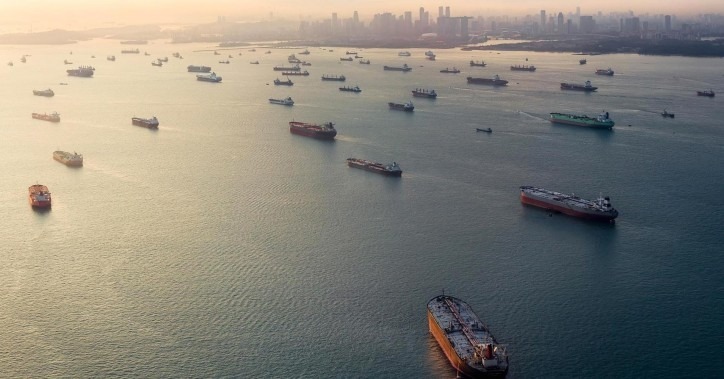
No one who can read a map should wonder why China would wish to position itself in either of those countries, nor why the Malacca Strait is important.
One quarter of the world’s traded goods pass through this tiny channel every year, including more than 20 million barrels of oil per day. Much of that oil, of course, comes via the Persian Gulf through the Strait of Hormuz in tankers that must first pass Gwadar, in Pakistan (q.v. below), and then Sri Lanka before reaching the Malacca Strait. Hundreds of millions of tons of additional gross tonnage travels toward these waters through the Bab-el-Madeb Strait as well. See Camp Lemmonier below, for the significance of that.
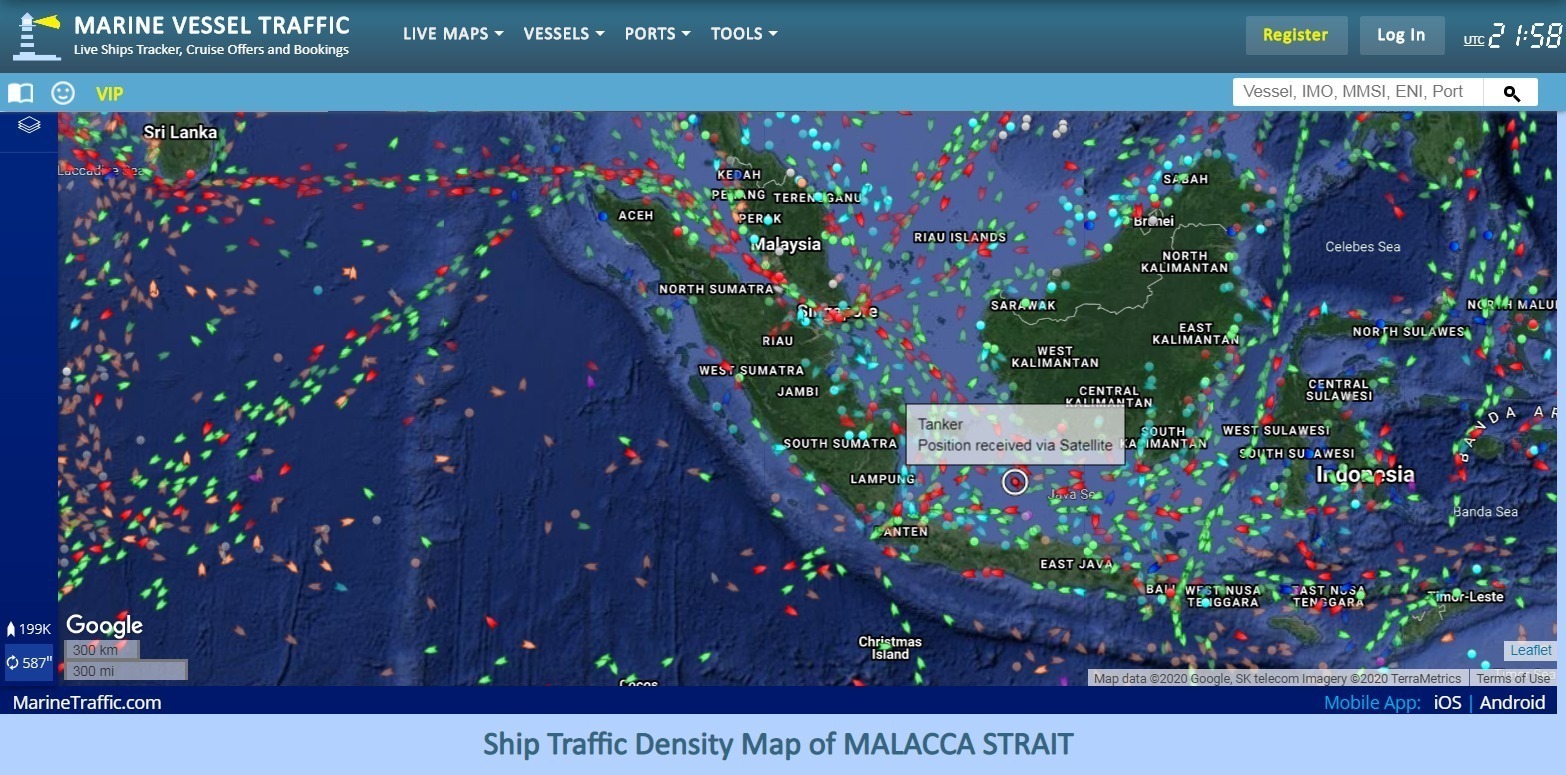
- East China Sea
Japanese intelligence assets claimed in late 2016 that China was providing aid and advice to the Kariyushi Club (Ryūkyū Independent Party) of Okinawa. Events in the years to follow lend at least some credence to this assertion.
Okinawa and the Senkaku Islands have long been considered a part of Japan (by the Japanese, anyway), but China makes claim to the area as well. Fearing Beijing might co-opt the independence movement, organizations like the Yuimarle Ryukyu no Jichi” (“autonomy of Ryukyu“), began publicly calling for independence from Japan without Chinese involvement.
However, there is ample evidence to believe that other groups have been rather less concerned about the possibility of losing autonomy to the Chinese should independence be gained – which could be accurate or could be gross overconfidence.
The Chinese, publicly unwilling to set a precedent that might affect their claim to Taiwan, repeatedly and contemptuously dismiss allegations of such involvement. They do, however, continue to contest Japanese sovereignty over the Ryukyu Archipelago and Senkaku Islands and have carefully (if very quietly) fomented trouble for the Japanese by dint of the U.N. International Covenant on Civil and Political Rights for self-determination.
More overt actions, including several violent ones, are suspected to be China-backed, if not entirely China-planned and –executed, though none have been proven sufficiently to allow the Japanese more than public posturing. Among those action were the loss of an MV-22 from MCAS Futenma over the Jungle Warfare Training Center to an Anzi Mk II MANPAD, the destruction of a Japanese National Police Agency (NPA) Special Task Force Type 87 ARV by an EFP in the “Soapland” district of Naha City, and the unsolved rape, murder, and disfigurement of five young Okinawan women on Mibaru Beach.
The so-called “Mibaru Beach Massacre” became the catalyst of protests every bit as riotous as those that followed the King Center (Martin Luther King Jr. National Historical Park) Bombing in at Atlanta. In addition to a great loss in lives and property, it drastically affected the forward deployment of US military assets to the region.
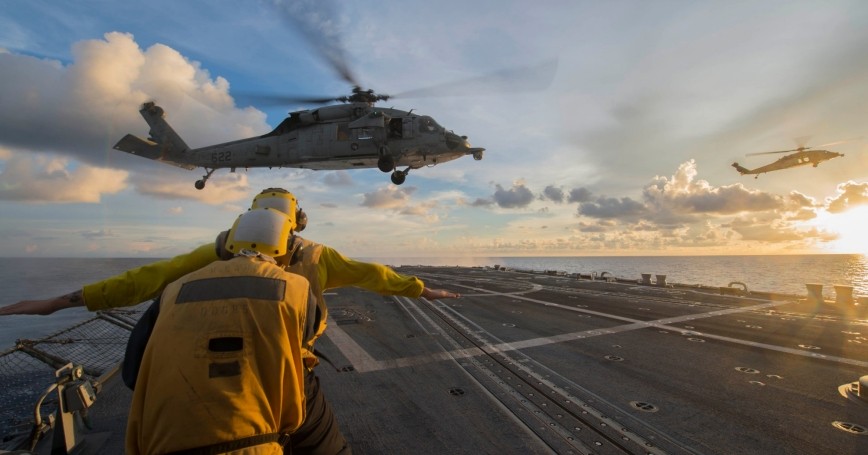
Although the Mibaru Beach Massacre was allegedly perpetrated by off-duty US military personnel (“three fit white men with very short hair”, according to a witness) who purportedly carved white supremacist iconography into the girls’ remains, there is little to support such allegations. All American troops were restricted to base on the night of the attack due to preparations for a simultaneous USAF MCCRE and USAF ORE.
Casting further doubt upon the matter was concurrent activity by the Defense Intelligence Agency. The DIA was at the time investigating a small group of Serbian nationals who’d traveled to the island from Alaska, ostensibly for a scuba-diving trip, on suspicion of terrorist ties to a Salar Islamist group based in Qinghai.
None of those men returned to Juneau, though the unidentifiable remains of one man who might have been from that party were recovered on Uotsuri Island a few days later. [Recall that Beijing has been wooing Belgrade for many years. In fact, in the earliest part of the last decade, Serbian President Aleksander Vucic – before his assassination and the chloropicrin-cyclosarin attack on Novi Sad – kissed the Chinese flag in gratitude for Chinese help during the COVID-19 virus and sponsored pro-Chinese billboards throughout the city.]

Regardless of proof or arrests, civil unrest among Okinawans following the Mibaru Beach Massacre had a huge impact. In addition to several deaths and much property loss on and off the various DoD installations, it ultimately forced the withdrawal of the 12th Marine Regiment to Hawaii and the transfer of the 67th Fighter Squadron (half the air superiority strength of Kadena AB) to Australia.
- East Africa
When the African Union (AU) held its biannual summit in 2012, it does so in a brand new headquarters. The thoroughly modernized structure, which cost an estimated $200 million USD, is paid for entirely by China and given to the AU as a “gift to Africa”. Accusations that China was (and continues) directly monitoring every type of communication to, from, and within the AU Office Center and Conference Complex are widely dismissed. Despite this, China remains extraordinarily well informed about AU matters thereafter.
- The Horn of Africa
When ships of the PLAN’s Zhanjiang South Sea Fleet arrived at the Horn of Africa years ago to formally open the “Chinese Peoples Liberation Army Support Base, Djibouti” (CPLASBD). It was the China’s first overseas base, from which Chinese warships were to sally into the Red Sea and the Gulf of Aden (across which travels some 15 percent of the world’s maritime trade) to support counter-piracy operations.
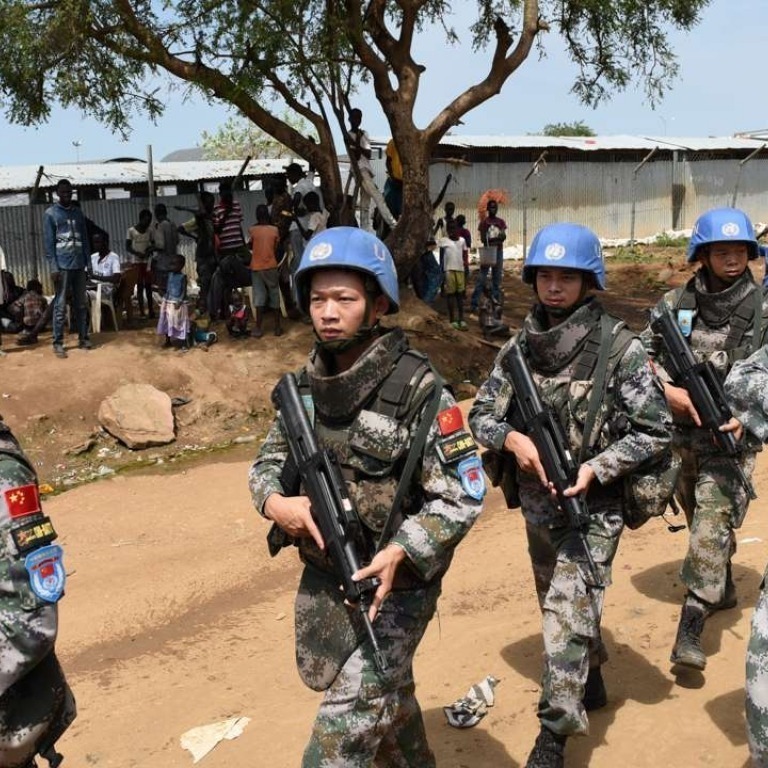
It was also used as a materiel support hub for the 5,000 (now over 10,000) Chinese troops deployed in peacekeeping missions across Africa (several times as many as were there as recently as 2019). PLAN “Blue Helmets” are stationed in Sudan, South Sudan, Liberia, Mali, the Democratic Republic of Congo, and other places.
China (which owns over 90% of Djibouti’s national debt) locates its base immediately adjacent to the Doraleh container terminal, which has been operated by the state-owned China Merchants Port Holdings since Djibouti nationalized the facility.
The base, and PLAN presence therein, has expanded every year since.
The CPLASBD is an excellent location for commerce and a strategic location, situated as it is by the Bab-el-Madeb Strait, which separates the Red Sea from the Gulf of Aden. It looks across the Arabian Sea to the Gwadar Sea Port in Pakistan and is positioned to control approach to the Suez Canal from the Indian Ocean side.
More significant to US national security interests, it is located immediately adjacent to the bases of several allied militaries (Italy, Japan, France) and their counterterrorism efforts – including Camp Lemonnier. Camp Lemonnier, formerly a French Foreign Legion facility, is the most important US base in the region, and the only permanent US facility in Africa. Camp Lemmonier is home to the Combined Joint Task Force Horn of Africa (United States Africa Command), and now it is effectively “just across the way” from America’s greatest geopolitical rival.
By the time of the Fourth Balkan War and the ensuing drawdown from deployed US military personnel, the equivalent of a reinforced Chinese combined-arms battalion was permanently stationed. The unit’s role is to serve as a QRF for Chinese and Chinese-backed peacekeeping units (in particular Burmese, Bangladeshi, Sri Lankan, and Pakistani formations).
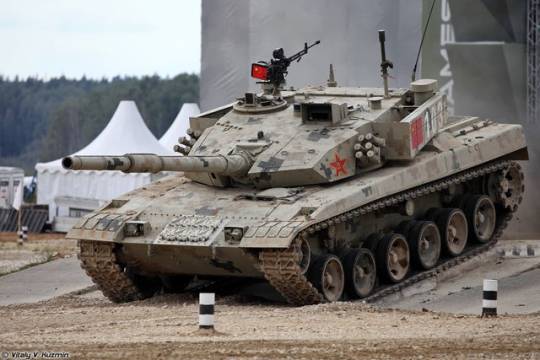
The disingenuously named 1st Independent Coastal Defense Brigade (Chinese: 独立海防第旅) is in fact the equivalent of a heavily reinforced Chinese combined-arms battalion. In addition to the traditional elements of the PLAGF combined-arms battalion, the unit can call on one, sometimes two, permanently stationed (though rotating responsibility) Jiaolonng “Sea Dragon” commando platoons, as well as a “guest” Jianjiji J-18 STOVL fighter squadron, multiple organic People’s Liberation Army Naval Air Force (PLANAF) helicopter squadrons (attack and transport), and other supporting elements.
It wasn’t too long after the base’s establishment that Chinese soldiers assigned to #1 ICDB were attending the Centre d’entraînement au combat d’Arta Plage (French Desert Desert Commando Course) alongside French, German, Slovakian, and soldiers of other nationalities (notably not those of the United States, Canada, or Turkey) at Arta, Djibouti.
In fact, during the Relief of Mayotte (q.v.), the far more numerous Chinese STOVL fighters and tanker aircraft based in Djibouti flew far more CAS missions than did local French aircraft for the French relief force (itself comprised of 5eme Regiment Interarmes d’Outre Mer (5th Overseas Combined Arms Regiment or 5eme RIAOM).
Later, when Chinese troops air-assaulted into to relieve South Sudanese “constables” under attack there, a large number of AMX-10RCs of 3rd Squadron, 5eme Regiment Interarmes d’Outre Mer (3/5RIOM) were in the armored reinforcement column alongside an equal number of Chinese VN1 APCs.

disputed border between Sudan and South Sudan backed by French armor. Many
UN vehicles in the Horn of Africa were repurposed from those left behind by
departing US Army and USMC units withdrawn to Crete during the Fourth Balkan War.
- Elsewhere in Africa
Zimbabwean leader Robert Mugabe was overthrown in a very strange coup in late 2017. No coup in Africa is completely improbable, though this one was more unexpected than some.
The ouster, ostensibly done at the behest of powerful political influences led by veterans of the “independence war” that saw the end of Rhodesia, was carried out by elements of the Zimbabwean Defence Forces (ZDF). The ZDF was led at the time by Gen. Constantino Chiwenga.
Although there was obvious rancor between (then) Vice President Emmerson Mnangagwa (himself a former commander of the ZDF who was backed by most of the armed forces) and First Lady Grace Mugabe (the former president’s intended successor), this was almost certainly not the sole cause of the conflict.
Chiwenga returned from a visit with the Central Military Commission of the Peoples Republic of China just days before the coup. In fact, his early return from China, prompted by warnings from Chinese Intelligence that Mugabe intended to have him arrested, was nearly a violent one. Members of the ZRP Support Unit (a Zimbabwean paramilitary police unit) were at the airport to seize the general but were overpowered by Chimenga loyalists.
The official line at the time, repeated by the UN and most news outlets, was that the coup resulted from conflict between Mnangagwa and the Mugabes. Democracy activists in Nigeria, South Africa, Guinea, and the South African Development Commission however told a different story – as did several African intelligence services.
Zimbabwe is home to numerous and very lucrative mining ventures. Virtually all are co-owned by the ZDF and shell companies run by the PLA. Zimbabwe’s Central Intelligence Organization, or CIO, was previously the demesne of Vice President Mnangagwa. Zimbabwe Security Forces have often exerted economic control over the country. In this case, several Zimbabwean police organizations also held a large stake in those mining enterprises (among others), most of which are a massive (and strategically significant) source of rare-earth metals, diamond, gold, and platinum.
Robert Mugabe had been in the process of nationalizing those concerns, and indeed had nearly completed the process. This would have made them the property of the Zimbabwean government – which was Robert and Grace Mugabe – and cut the CIO and assorted police units off from their revenue.
Within a week of the coup, all nationalization of joint PLA-ZDF mining ventures was reversed and a number of accidental deaths were recorded. Tremendous wealth continued to flow, though none was ever used to mitigate record levels of high crime and internal dissent.
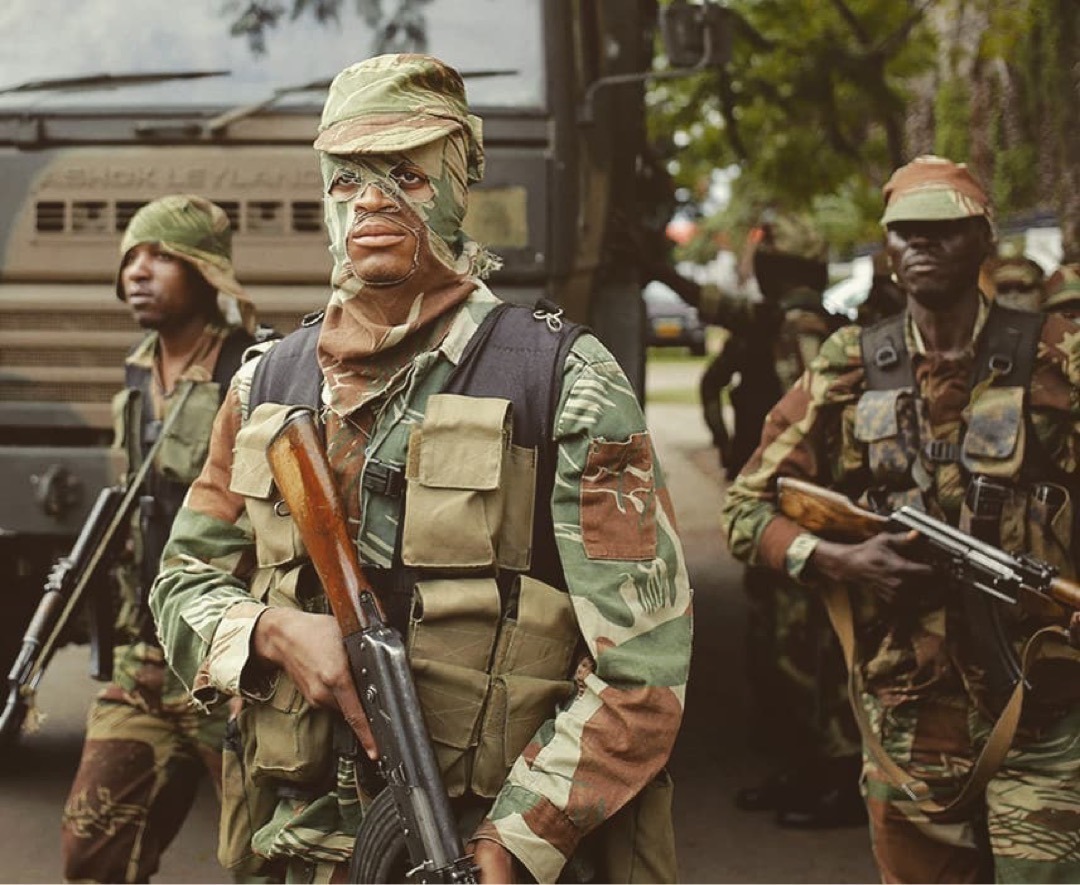
Pakistani Rangers (gendarmes) are often attached to such units.
Little was heard about the matter from the African Union in its China-built headquarters complex, though any transition of government on the continent (much less an overthrow) should have been the focus of scrutiny and comment. Perhaps even armed intervention (as happened after the declaration of the Islamic Emirate in North Sinai by the purportedly IRGC-backed Ansar Bait al-Maqdis, and later in the Republic of Zangaro).
Less than a decade later Mnangagwa and his retinue were killed in a VBIED attack allegedly conducted by supporters of the aging Grace Mugabe, who was said to be in hiding in Nigeria. General Chiwenga became the new President.
Approximately a month after Chiwenga’s inauguration, Beijing propped up his administration by underwriting loans from the International Monetary Fund, which had previously ceased working with Harare. It also “loaned” Mnangagwa a large training cadre of its Peoples Armed Police (including several units that had been responsible for securing the Winter Olympics in Bejijing) to train a new Gendarmerie style branch of the ZRP Police. This new element, the Police National Constabulary subsumed the contemporary Police Protection Unit, the Presidential Guard, and some specialty units from the Army.
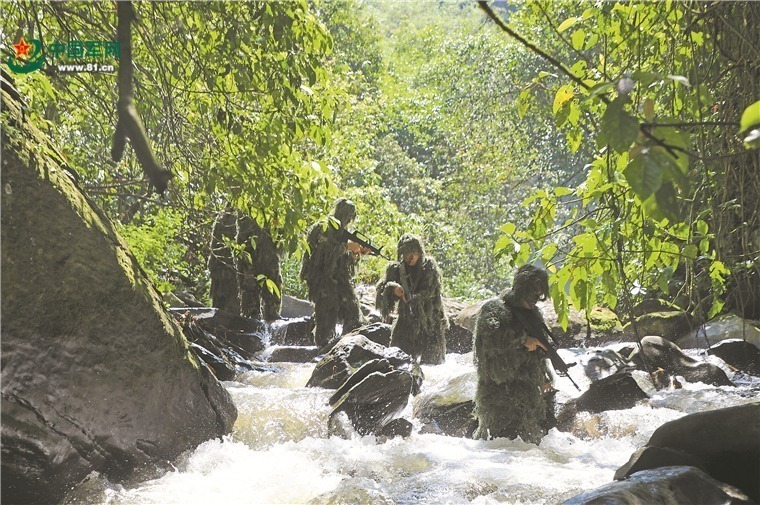
Additional training and support came from Pakistan’s (Sindh) Rangers – transported to Bulawayo by massive PLAAF Xi’an Y-20 Kunpeng transports. The Pakistanis are still there.
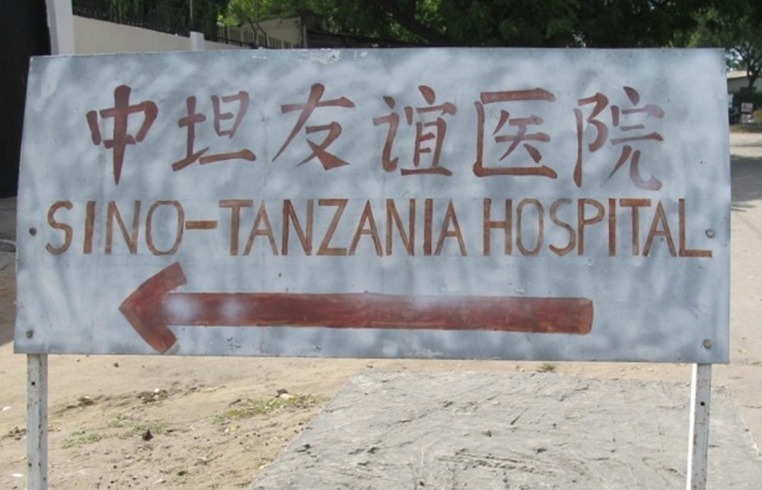
JUMP TO TRIARII COUNTER-INSURGENCY OPERATIONS, LOUISIANA
JUMP TO 36TH INFANTRY DIVISION “FREE TEXAS ARMY” BORDER OPERATIONS
